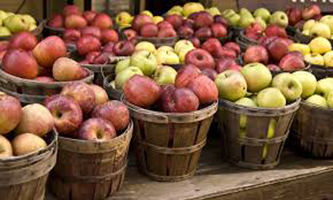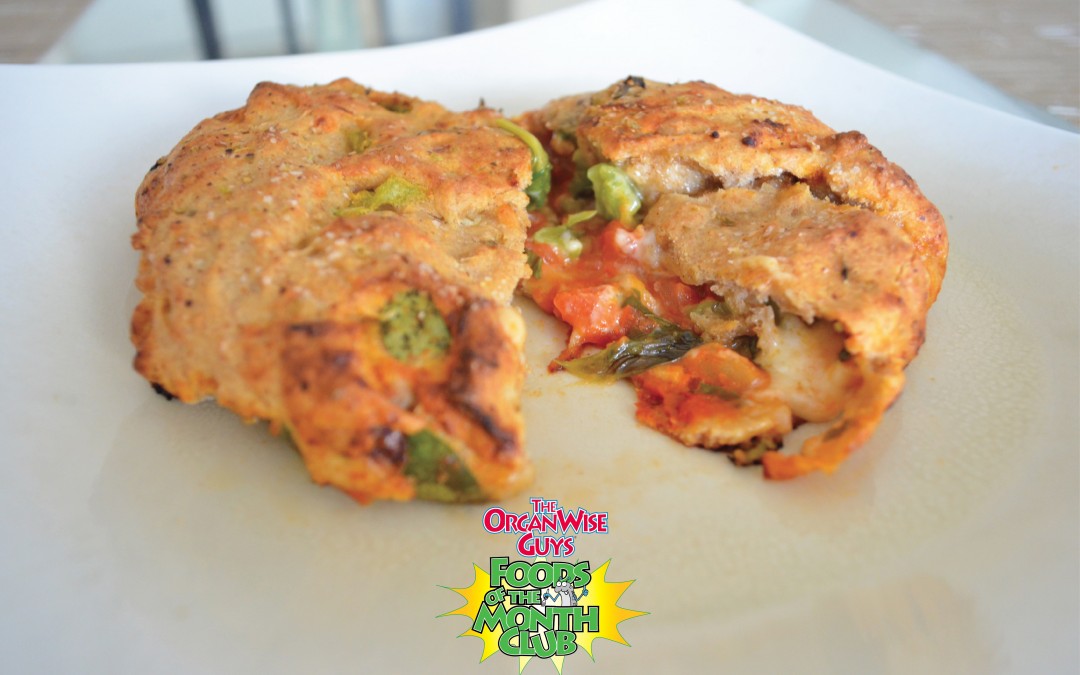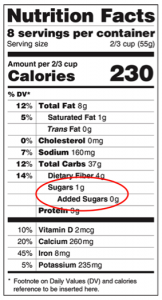
by admin | Oct 26, 2017 | Educator, Healthy Food, Kids, Nutrition
Let’s do an Apple Taste Test for National Apple Month! Apples are also an OrganWise Guys Foods of the Month for October, and the perfect food for the fall season. Apples are such a versatile food that can be used in anything from salads to desserts and they come in so many delicious varieties!
Chew on this interesting apple trivia:
- Americans eat approximately 120 apples apiece each year!
- Apples are nutritious because they contain lots of fiber, vitamins C, B6, and A, and potassium, as well as antioxidants.
- 2500 known varieties are grown in the United States.
- 36 states grow them with Washington, New York, Michigan, California, Pennsylvania, and Virginia being the top production states.
- Apples are available all year round and are a perfect take-along snack anytime!
- Apples don’t require peeling so eat the skin because it contains healthy nutrients.
A taste test is a really fun way to encourage kids to try a small sample of a new food where they may typically be more close-minded about trying new things. This interactive apple taste testing worksheet will help you introduce several different apple varieties and let’s them provide feedback.
We would love to hear about your at-home taste tests! Share with us how it went and include any pictures of the finished worksheets on our Facebook page!

by admin | Sep 30, 2017 | Educator, Healthy Food, Nutrition, Recipes
Did you know that you can substitute whole wheat flour for white flour when baking? What better time that September, when whole grains are a Foods of the Month, to try this out?!
ICYMI, whole wheat is a subset of whole grain that strictly applies to wheat products. So when a product is labeled whole grain, it means that it includes the entire kernel of the grain – including the outer bran layer, the germ (the part that can sprout into a new plant), and the inner, starchy endosperm. Refined grains, on the other hand, only include the endosperm; that’s why whole grains generally take longer to cook.
One of our favorite ways to get more whole grains (organic is best) is by swapping out white flour for whole wheat flour in pizza dough. The great thing about making your own pizza dough is that you can make a big batch and store it in the fridge, to create various healthy dinners throughout the week. To make whole wheat pizza dough, we recommend using half whole wheat flour and half white flour in your favorite pizza dough recipe. By leaving some white flour, the dough is not too dense, but you still get the fiber benefits of whole wheat flour. Combine your flour with yeast, hot water, a little salt and sugar, some extra virgin olive oil and mix thoroughly.
Now, what to do with your healthy homemade pizza dough? Get a little more creative than a regular pizza and try making a calzone or Stromboli! To make these traditionally fatty dishes healthier, spread a thin layer of tomato sauce on the dough, add organic cheese, and then top with tons of veggies like tomatoes, peppers, onions and spinach. Carefully roll it up, and put in the oven at 375 degrees for 35 minutes. Enjoy!

by admin | Sep 23, 2016 | Grown Up
Thanks to the tireless effort of our amazing partners, our influence is expanding! Our evidence-base from schools, communities and head starts, has led to a new sector, corporate health and wellness.
How do kids fit into corporate wellness and obesity prevention? To begin, employees are also parents. Many parents wish to instill healthy living habits in their children. Working parents are more likely short on time and not sure of the best approach. Secondly, children are dependents on company health care policies. So, their wellbeing has an impact on the bottom line. As childhood obesity continues to affect youth, corporations recognize the potential impact they can make by investing in obesity prevention for children in schools and communities.
Sponsoring turnkey, evidence-based school and community-wide programs and events, as part of a year round initiative where children and families spend their time, are steps in the right direction, not to mention great opportunities for public relations. Coupling this outreach with consistent messaging in the workplace provides further opportunity for family engagement.
In terms of corporate wellness and obesity prevention, this topic is important because children are the future pool of employees. Empowering children with skills to live healthy and giving them tools to build a foundation of healthy habits makes for a promising future workforce. A workforce that is more productive, vibrant and robust is much better than one filled with missed days, working while sick, and other issues that contribute to enormous, and growing, health care costs.

Extending the impact of corporate wellness programs into the home and community may help achieve the two-fold goal of healthier, happier employees and dependents and the impetus to turn the tide on the obesity trajectory.
We are so appreciative of the tireless efforts of health educators ‘in the field’ – from teachers, county Extension Agents, nutritionists, nurses, etc. As parents take initiative and more resources are available through corporate channels, it follows that the positive impact could be exponential! Click here to continue reading about this issue and to see how promoting family and community engagement is an investment toward a healthier bottom line and happier, more productive employees and families.

by admin | May 9, 2016 | Uncategorized
In May, we are so excited to celebrate National Physical Fitness and Sports Month! When it comes to being active, we think that everyone should participate no matter what age, gender or race. That’s why we are so excited to partner with #GirlsAre Campaign to promote girls fitness. Thanks to the Alliance for a Healthier Generation, Clinton Health Matters Initiative, and No Ceilings: The Full Participation Project of the Clinton Foundation for sponsoring this campaign. This three-week long campaign is designed to shine the spotlight on female fitness.

Why do we focus on girls and women? Statistics show that girls are less physically active as boys. By the time they reach high school, females are twice as likely to drop out of sports teams than their male counterparts. Here at OWG, we want everyone to be physically fit and are so excited about promoting girls fitness! Exercise helps build muscle, improve cardiovascular health, and releases feel-good chemicals called endorphins that make us happier. To show our support for the #GirlsAre Campaign we have rounded up our favorite blog posts that feature strong, physically fit girls. You can check them out here.
Dominique Dawes – Listen in as Dominique Dawes, a former Olympic Gymnast, share her healthy lifestyle tips.
Ruthie Bolton – One of the most accomplished athletes in the world shares her tips for keeping kids healthy. Ruthie Bolton is a 2-time Olympic Gold Medalist, a USA Basketball Female of the Year, the Sports Illustrated Best Woman Athlete by home state, and one of only 4 players to be named to the Women’s Basketball Hall of Fame Class of 2011.
Dr. Sarah Messiah (Part 1 and Part 2) – Not only is Dr. Messiah a colleague in childhood obesity prevention, she is also a former Olympic athlete!
Stephanie Smith – An elite sprinter sits down with Peri Stolic for an interview about her sport and training for the Olympics.
by admin | Mar 17, 2016 | Grown Up

One of the hottest topics in food science today is the discussion around sugar. What often gets lost in the conversation however, is the distinction between the adjectives ‘natural’ and ‘added.’ Both natural sugars and added sugars form simple carbohydrates. Where they differ is that foods with natural sugar also contain complex carbohydrates, vitamins, and minerals. Added sugars provide added/empty calories with no nutritional value
In addition, foods with complex carbohydrates and natural sugar retain nutrients, such as dietary fiber, that are removed from simple carbohydrates. Complex carbohydrates are essential to our body and are broken down into glucose slower than simple carbohydrates, which means they provide longer lasting energy. (Think nature’s foods … fruits, vegetables and whole grains.
As we all strive to feed our kids (and ourselves) healthy, nutrient-rich foods, we have come to rely on food labels to help us determine which products to purchase. When it comes to the sugar debate though, one of the biggest challenges we face is deciphering where its coming from since the label simply lists ‘sugar’ without differentiating between natural and added sources.
Good news (potentially)! In July of 2015, the FDA issued supplemental proposed rules, one of which was to include the percent daily value (%DV) for added sugars on the Nutrition Facts label of packaged foods.

The percent daily value specifies how much a nutrient in a serving of food contributes to a daily diet and would be based on the recommendation that the daily intake of calories from added sugars not exceed 10 percent of total calories. (For reference, four grams of sugar equal one teaspoon.)
Some common words for added sugar are sucrose, dextrose, high fructose corn syrup, maltose, and fruit concentrate. But did you know there are at least 56 names for sugar? So, as we’re waiting for these proposed changes to take place (manufacturers have two years to conform once the measure is finalized), we listed them all here (in alphabetical order) for your convenience. There’s nothing more empowering than being an educated consumer!
1. Barley malt
2. Barbados sugar
3. Beet sugar
4. Brown sugar
5. Buttered syrup
6. Cane juice
7. Cane sugar
8. Caramel
9. Corn syrup
10. Corn syrup solids
11. Confectioner’s sugar
12. Carob syrup
13. Castor sugar
14. Date sugar
15. Dehydrated cane juice
16. Demerara sugar
17. Dextran
18. Dextrose
19. Diastatic malt
20. Diatase
21. Ethyl maltol
22. Free Flowing Brown Sugars
23. Fructose
24. Fruit juice
25. Fruit juice concentrate
26. Galactose
27. Glucose
28. Glucose solids |
29. Golden sugar
30. Golden syrup
31. Grape sugar
32. HFCS (High Fructose Corn Syrup)
33. Honey
34. Icing sugar
35. Invert sugar
36. Lactose
37. Malt
38. Maltodextrin
39. Maltose
40. Malt syrup
41. Mannitol
42. Maple syrup
43. Molasses
44. Muscovado
45. Panocha
46. Powdered Sugar
47. Raw sugar
48. Refiner’s syrup
49. Rice syrup
50. Sorbitol
51. Sorghum syrup
52. Sucrose
53. Sugar (granulated)
54. Treacle
55. Turbinado sugar
56. Yellow sugar |
The motto of The OrganWise Guys is Empowering Kids (of all ages) to be Healthy and Smart from the Inside Out!, so we hope this information does just that! For more resources to help your family get healthy, check our FREE Kids Page for coloring/activity sheets, recipes, videos and so much more.









